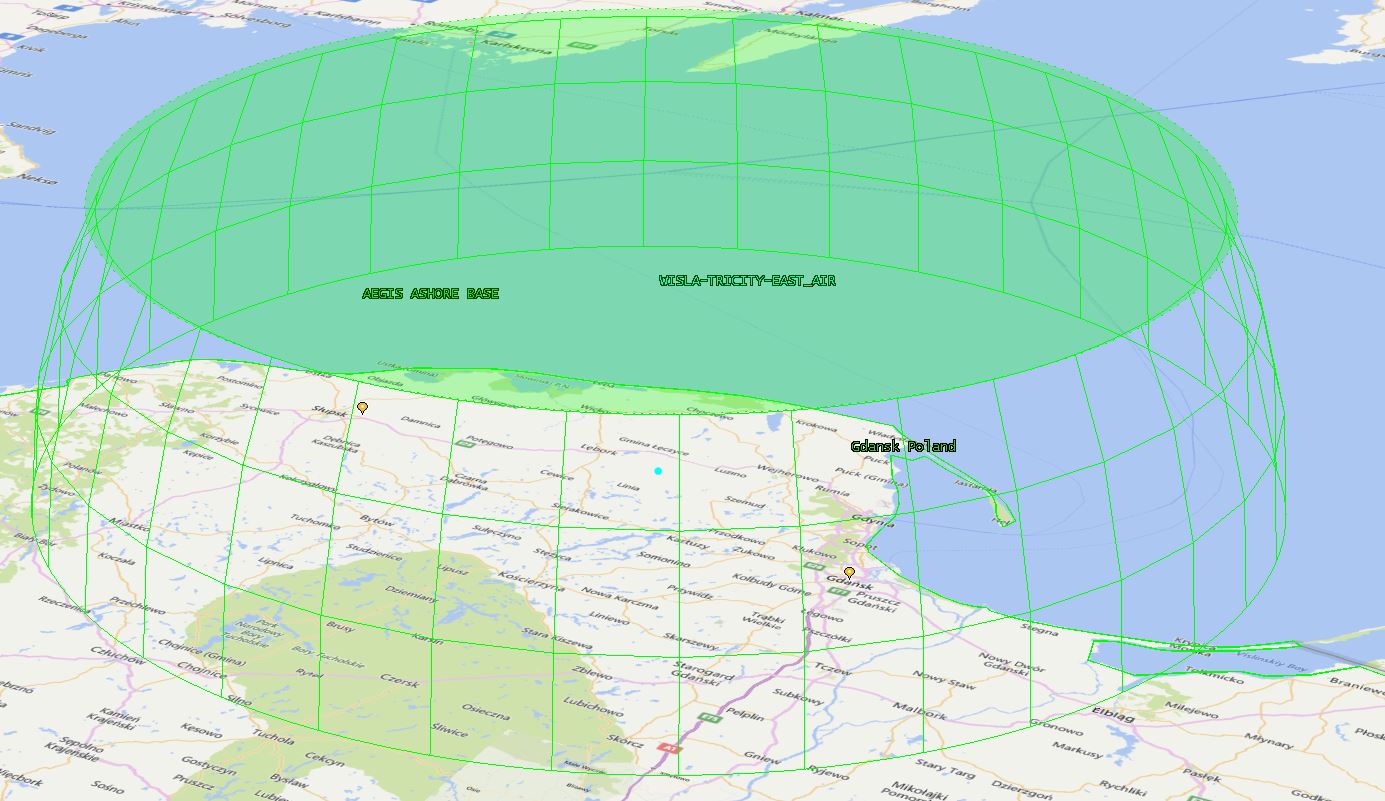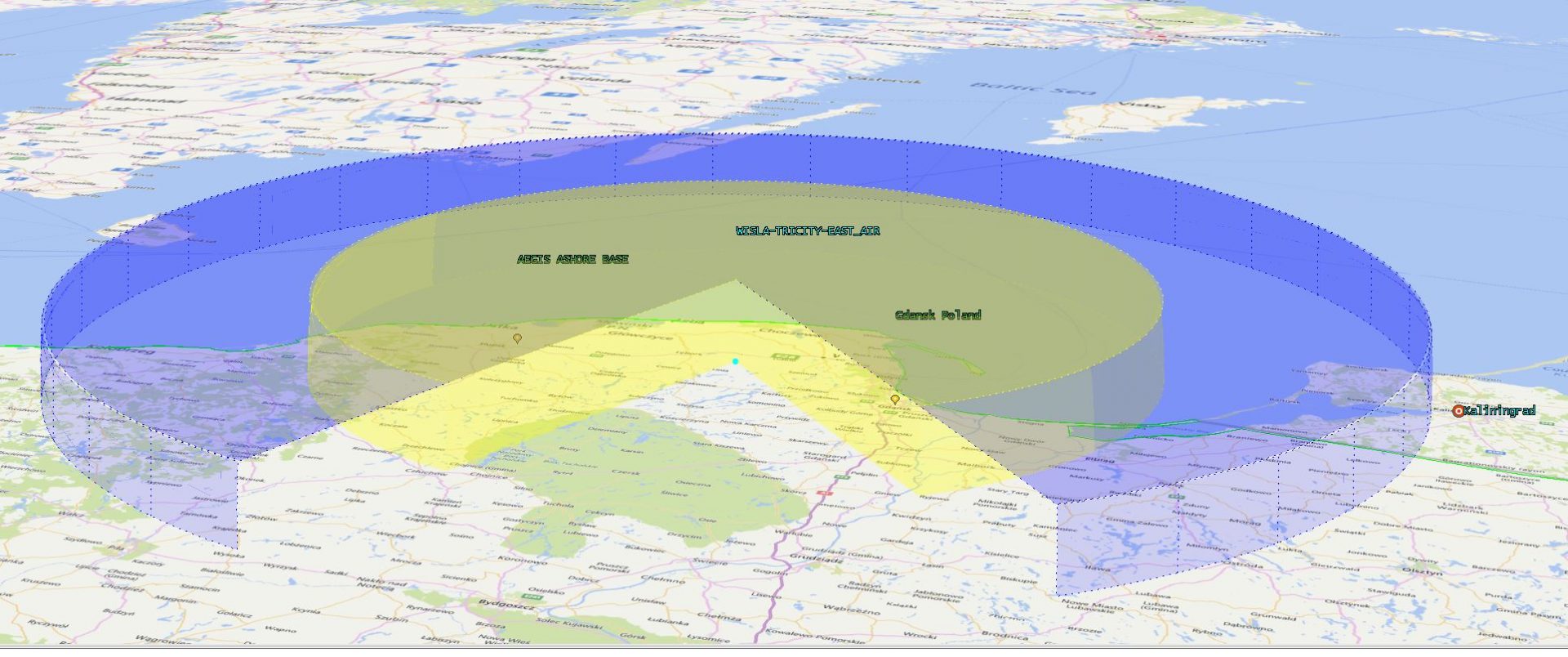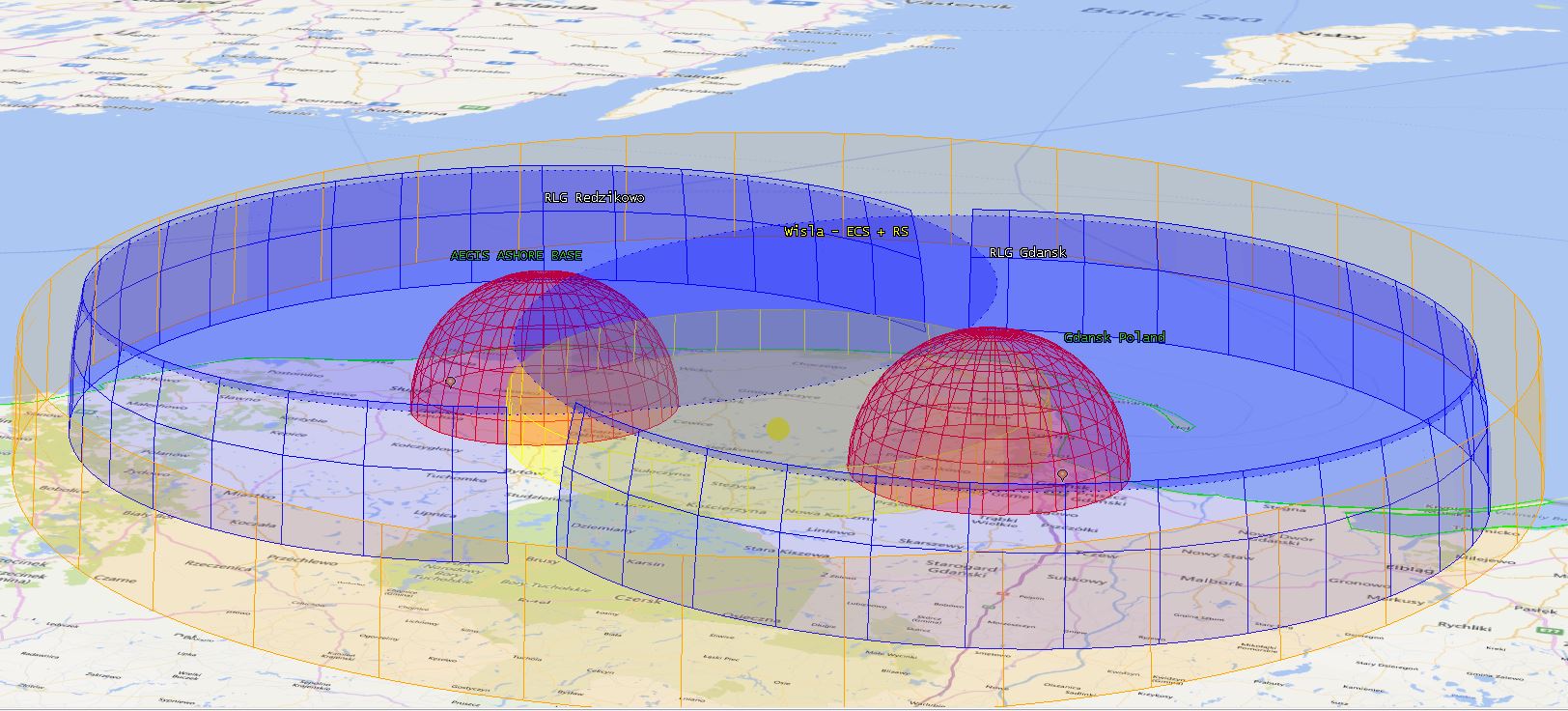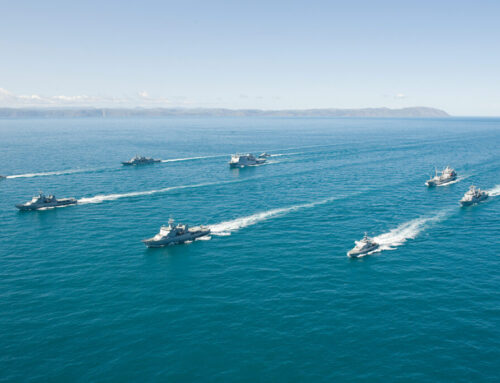PP COMMENTARY Polish air defense system for Aegis Ashore in Redzikowo – a way of reducing the cost of the ‘Wisla’ program
Autor foto: Domena publiczna
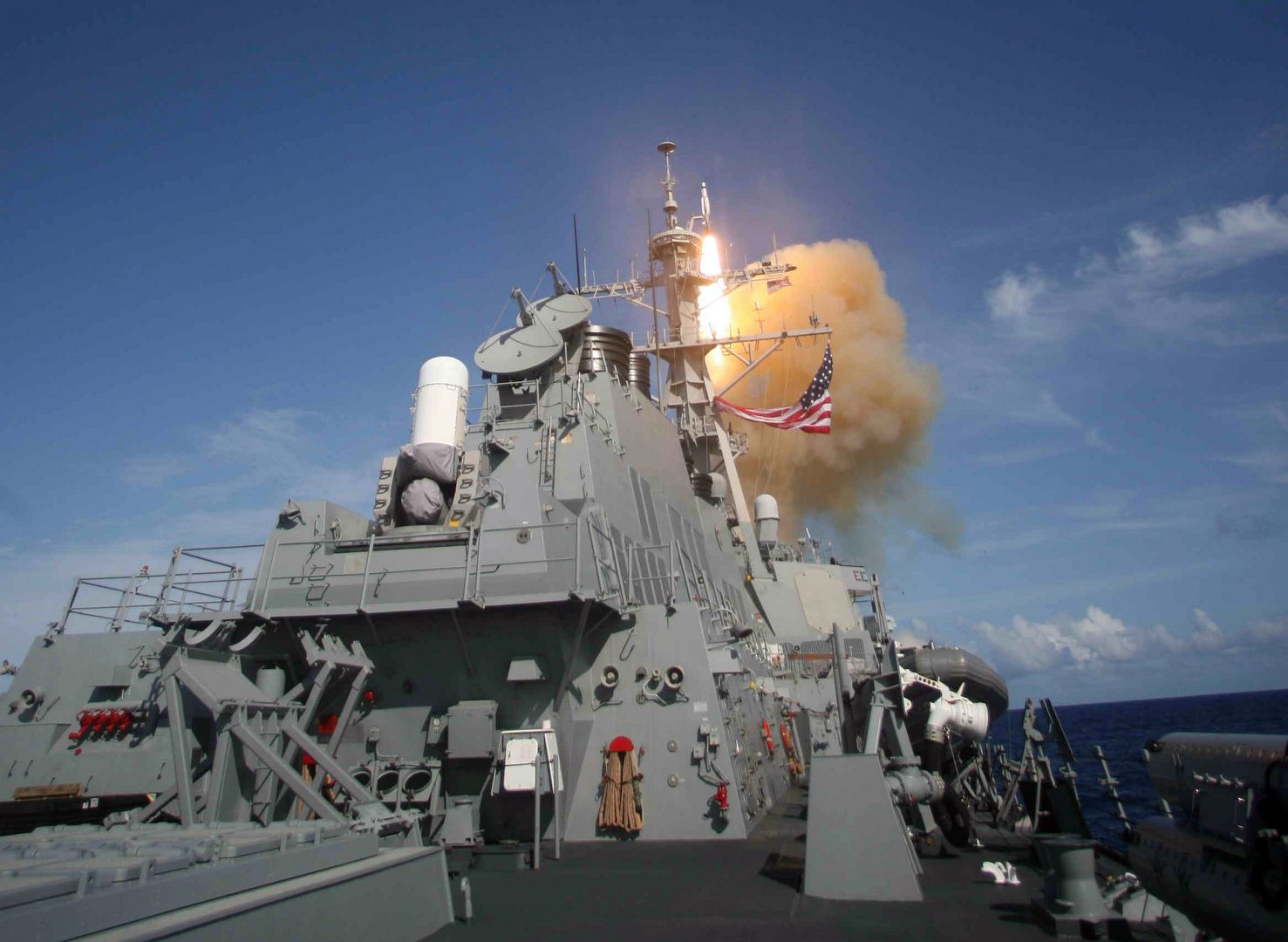
Polish air defense system for Aegis Ashore in Redzikowo – a way of reducing the cost of the ‘Wisla’ program
March 22, 2016
Author: Maciej Kowalski


PP COMMENTARY Polish air defense system for Aegis Ashore in Redzikowo – a way of reducing the cost of the ‘Wisla’ program
Autor foto: Domena publiczna
Polish air defense system for Aegis Ashore in Redzikowo – a way of reducing the cost of the ‘Wisla’ program
Author: Maciej Kowalski
Published: March 22, 2016
Financial issues are among main difficulties delaying Polish-American inter-governmental negotiations on the purchase of the ‘Wisla’ medium-range air defense system. Unofficial sources say that the offer presented by the American side is almost double the budget designated for all Polish air defense procurement programs (26 billion PLN, including also ‘Narew’ and ‘Poprad’). Incorporating ‘Wisla’ batteries into NATO’s defense architecture (NATO BMD) and in particular its American element, the European Phased Adaptive Approach (EPAA) is a potential way of reducing the financial stress of this purchase on Poland’s budget.
NATO Ballistic Missile Defense
Since the Lisbon Summit (2010) NATO has been building its Ballistic Missile Defense (BMD) system based on a common command system (Air Command and Control System, ACCS) and voluntary contributions of NATO member states in the form of means of detection and destruction. An example of a voluntary contribution by the USA is the European Phased Adaptive Approach (EPAA) program, which assumes the deployment of warships, radars and bases on land equipped with the AEGIS combat system (ACS) in Europe. Poland has declared its contribution to the NATO BMD through hosting of EPAA components (AEGIS Ashore base in Redzikowo), as well as deployment of stationary RAT-31DL radars and the purchase of ‘Wisla’ and ‘Narew’ air defense systems.
As a general NATO rule, the alliance funds only the creation of command architecture, while member states provide the means of destruction and detection. It is possible, however, for the national purchases to be financed directly by NATO through the Security Investment Programme (NATO SIP). The Polish radar stations equipped with long-range radar RAT-31DL, purchased from the SIP funds, and integrated into the NATO BMD would be a prime example of such undertaking.
AEGIS Ashore Ballistic Missile Defense in Redzikowo
The American EPAA program is the backbone NATO BMD for protection of Europe against a missile attack. It is based on AEGIS system modules, aimed at combating the ballistic threats in the middle phase of flight (midcourse) as well as AN/TPY-2 radars. The land-based part of this system, the Aegis Ashore (AA), uses Standard Missile 3 (SM-3) family for to destroy targets beyond the boundary of the atmosphere (80-100 km above the ceiling). The system in Redzikowo is therefore vulnerable to attacks from threats flying below this altitude, such as aircraft, cruise missiles and even some ballistic missiles. This vulnerability has been recognized by the U.S. Congress in the budget law for 2016 (National Defence Authorization Act – NDAA). Congress recommended Department of Defense to ensure anti-air warfare (AAW) capabilities for the AA bases in Poland and Romania. The Secretary of Defense sent a request to the NATO agency responsible for managing the Security Investment Programme, seeking financial support for this program. Therefore, the intention of the U.S. is that NATO departed from the principle of joint financing of only means of command, and started to support the purchase of means of destruction.
The NDAA proposes the adding SM-2 Evolved Sea Sparrow missiles or ‘other appropriate missiles’ to the systems in Redzikowo and Devesulu. Therefore, the AA bases would more closely resemble their offshore archetypes in regards to combat capabilities. Namely, warships equipped with ACS integrated combat system possess 8-cell vertical launchers MK-41, which are armed with both the SM-3 and SM-2 as well as attack missiles. The integration of SM-2s with the AA missile defense sites in Deveselu (Romania) or in Redzikowo is theoretically possible, since the land-based systems are designed to closely reflect their marine counterparts. In addition, a representative of Lockheed Martin (manufacturer of ACS) already stated in April 2015 that the company ‘received signals’ and examined what steps should be taken to carry out such changes. This statement, however, was quickly denied by company itself, presumably for political reasons and Russia’s objections toward the AA bases.
Possible difficulties in ACS adaptation
However, the base in Redzikowo is designed with only three MK-41 launcher foundations. Assuming the installation of one launcher per foundation, it provides only 24 launcher cells and this many missiles ready for launching. Some non-governmental analytical units and Raytheon, the SM-3 missile manufacturer, have confirmed this figure. In comparison, the Arleigh Burke-class destroyers with a fully capable ACS system have 96 cells (12 launchers) while the Ticonderoga-class cruisers have up to 122 cells. Thus enriching the AA system with an anti-aircraft capacity would require structural changes in the form of additional infrastructure for the launch, handling and loading missiles, etc.
Polish proposal
An alternative to changes in the ACS system may be the Polish ‘Wisla’ air defense system which would take over anti-aircraft defense of the base in Redzikowo. One of the eight batteries ordered by the Ministry of Defense (or part of it, if technical capabilities allow) would be allocated to defend the AA. This would potentially allow the ‘Wisla’ system to enter the financing structure of the NSIP and the purchase to be partly covered by the Alliance.
The basic argument, which increases the attractiveness of such a solution from an operational point of view, is the geographical location of the base in Redzikowo in relation to the Pomeranian population centers, especially the Tri-City. The base in Redzikowo is located only 80 km from the border of Gdynia and 150 km from the farthest part of Gdansk. With the appropriate technical parameters a single battery of the ‘Wisla’ system could defend both targets, or at least a synergy could be achieved for the equipment dedicated to the Tri-city and the AA system. This synergy could take form of joint logistics, spare effectors, support vehicles, and perhaps even command and radar posts.
First, the requirements of the Ministry of Defense should be analyzed in terms of acceptable systems. MOD requirements from 2013 state that the ‘Wisla’ system should be able to combat air targets at a distance of 100 km and ballistic missiles with a range of 1000 km (so-called short range ballistic missiles, SRBM) in the final phase of their flight. It does not, however, specify the area which is to be effectively protected.
Graphic 1. The range of ‘Wisla’ battery is marked in green, 100 km radius and 50 km ceiling, placed in a sample location between Tri-City and Slupsk.
Graphics 2 pictures the possibilities of combating air targets (aircraft, drones, helicopters) by effectors offered by the finalists of the tender – PATRIOT systems and SAMP / T. The ranges are shown from the sample location in Pomerania, and with partial azimuth for readability of the graphics.
- The blue sphere PATRIOT- PAC-2 GEM / T (range of 160 km, the ceiling of 24 km)
- The yellow sphere SAMP / T Aster 30 (minimum range of 100 km, the ceiling of 20 km)
The analysis of the threat from SRBM missile attack proves more problematic. The parameters of ballistic missiles that could threaten targets in Pomerania, such as speed, trajectory and countermeasures, are varied and not always publicly known. Some ballistic missiles of the reduced trajectory never go beyond the atmosphere, thus the requirement of the Polish Armed Forces concerning the ‘final phase’ is ambiguous. Moreover, most of the areas effectively protected by Patriot and SAMP / T are classified. Still, both offers belong to the so-called point defense systems i.e. defending very limited areas. Therefore, one may compare only the range of anti-ballistic missiles of both systems offered to Poland (graphics 3A, 3B). It should be emphasized that the scope of the spheres does not represent the effectively protected area, and only the theoretical ranges of individual effectors.
- Violet sphere –PATRIOT – PAC-3MSE (range 35 km, ceiling 36km)
- Yellow sphere – Aster 30 (range 35km, ceiling 20km)
A sample placement of batteries – Launch/Engage on remote
As evident from the graphic above, regardless of the offered effector, a traditionally grouped battery is not able to fulfill the mission of defense of two targets simultaneously. Therefore, it would be necessary to use modern tactics of modular and remote placement of battery components of the system, such as ‘Launch on Remote’ (LOR) or ‘Engage on Remote’ (EOR). Both techniques allow firing of effectors using data from other systems’ radars (LOR) or even destruction of the target using this data (EOR). Such a feature is developed in a number of ballistic defense systems, but there is no operational data for theater missile defense systems (TMD) such as PATRIOT or SAMP/T. However, a similar procedure called Remote Launch is available for PAC-3 systems used in the Armed Forces of the United States. Much like EOR and LOR, the procedure allows increasing of the area defended by a single battery. Further analysis will focus on this procedure, as an accessible formula for setting the ’Wisla’ battery. It does not, however, suggest superiority of PAC-3 over the SAMP / T, nor that the PAC-3 in its present form is the best choice in the ‘Wisla’ programme.
The Remote Launch (RL) procedure does not assume the use of external radars, but allows remote deployment of launchers and communication via VHF link. The RL offers the maximum distance between the launcher and command center (i.e. Engagement Control Station) of 30 km. However, this distance is insufficient to fulfill the mission analyzed here, due to distance between the Tri-City and Redzikowo base. Therefore, graphic 4 shows a hypothetical layout of the ‘Wisla’, with 40 km separating the ECS from the launchers. In other words, graphic assumes technological progress in maximum deployment distance of 10 km as compared to current capabilities of PAC-3. Another assumption is that the battery will have an omnidirectional fire control radar with a range of at least 110 km (orange circle). Two groups of remote launchers (RLG – Remote Launcher Group) are set 40 km (yellow circle) from the fire control radar (RS – Radar System) and ECS center. It is assumed that each ‘Wisla’ battery group would ensure effective protection against ballistic missiles attack within a radius of 20 km (red circle), which is the upper limit given by NATO on the occasion of the deployment of PAC-3 system in Turkey in 2012. The blue color has been used to select ranges of missiles for air combat purposes (range – 70 km, the maximum ceiling – 20 km).
It is worth noting that the AN/MPQ-65 radar currently deployed in PAC-3 batteries worldwide is a sector radar (120/90 degrees), which would not allow the deployment of launchers as shown below. The Arabel radar from the SAMP / T offer, rotating MFCR radar from the previously excluded MEADS offer, and the prototype PATRIOT NG AESA radar possess or will possess the ability of supervision within the 360 degrees range.
This simulation above shows that the inclusion of AA base and the Tri-City area under a protective umbrella is beyond the capacity of the Patriot system in the current PAC-3 configuration, which has been used as an example here. Due to the dynamics and development trends of BMD technology, particularly engagement methods like launch / engage on remote, modularity and plug-and-fight, the parameters of the ‘Wisla’ air defense system should enable the synergic defense of the Pomerania suggested in this article.
Conclusions
- The intention of the U.S. Congress is to provide Aegis Ashore base in Redzikowo with air defense capabilities. Steps in this direction are to be taken together with the host country, Poland, and are planned to be a part of NATO’s missile defense strategy. The possibilities of technical modifications to the Aegis Combat System, including adding anti-aircraft missiles and anti-ballistic low ceiling missiles are being analyzed.
- Further U.S. investments in the country are in the best interest of Poland. Similarly, active participation of the Polish Armed Forces in the defense of the Aegis Ashore system could prove beneficial both operationally and financially. Therefore, the Ministry of Defence should carry out an analysis of the possible inclusion of Aegis Ashore under the umbrella of ‘Wisla’ air defense system.
- Assuming that the results of the above-mentioned analysis of the MOD demonstrate the possibility of effective defense of the Redzikowo base, Poland should submit such a proposal to the U.S. government.
- In the longer perspective, the U.S. should be supported in its efforts to fund the NSIP system for AA base defense. The funds would be used for the purchase and maintenance of a dedicated ‘Wisla’ air defense battery system.
Author: Maciej Kowalski, Research Fellow at the Casimir Pulaski Foundation
Graphics: GM SPAZIO GMDT

